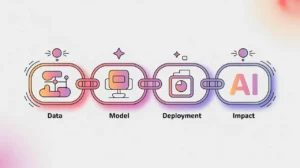Importance of Cooling and Data Center Design
Cooling and Data Center Design refer to the engineering and architectural strategies that ensure computing facilities operate efficiently and reliably. As AI workloads grow, data centers consume more energy and generate more heat, making cooling a critical factor for performance, cost, and sustainability. Their importance today lies in the fact that next-generation AI models demand immense computational resources, pushing data centers to innovate in thermal management and energy efficiency.
For social innovation and international development, cooling and design matter because mission-driven organizations depend on cloud and local infrastructure to deliver health, education, and humanitarian services. The sustainability and accessibility of these systems are tied to how efficiently data centers are built and operated.
Definition and Key Features
Cooling solutions range from traditional air conditioning to advanced methods like liquid cooling, immersion cooling, and free-air cooling that leverages local climates. Data center design includes layout, airflow management, and power distribution, with the goal of maximizing performance while minimizing energy waste. Efficiency is often measured by Power Usage Effectiveness (PUE), a ratio of total facility energy use to computing energy use.
This is not the same as general IT hardware efficiency, which focuses on processors and accelerators. Nor is it equivalent to renewable energy sourcing, though both are linked to sustainability. Cooling and design specifically address how facilities manage heat and energy in delivering computational capacity.
How this Works in Practice
In practice, hyperscale providers and regional data centers experiment with innovative cooling solutions to reduce costs and environmental impact. Liquid cooling can handle dense AI workloads more effectively than air-based systems, while modular or edge data centers are designed for deployment in remote or resource-constrained environments. Local climate also shapes design choices. Cooler geographies can use ambient air, while hotter regions require more intensive cooling.
Challenges include balancing efficiency with cost, adapting designs to local conditions, and addressing water use in cooling systems, which may compete with community needs. Organizations must also plan for resilience, ensuring data centers remain operational during extreme weather or power disruptions.
Implications for Social Innovators
Cooling and data center design directly affect mission-driven organizations that rely on cloud services and local infrastructure. Health systems using AI diagnostics depend on efficient data centers to keep costs and emissions manageable. Education platforms hosting millions of learners rely on facilities designed for scalable performance. Humanitarian agencies benefit from edge data centers optimized for crisis zones where traditional infrastructure is unavailable. Civil society groups often advocate for sustainable designs that align with environmental justice and community well-being.
By advancing efficient cooling and thoughtful design, organizations can ensure that AI infrastructure remains sustainable, resilient, and inclusive in its global impact.







